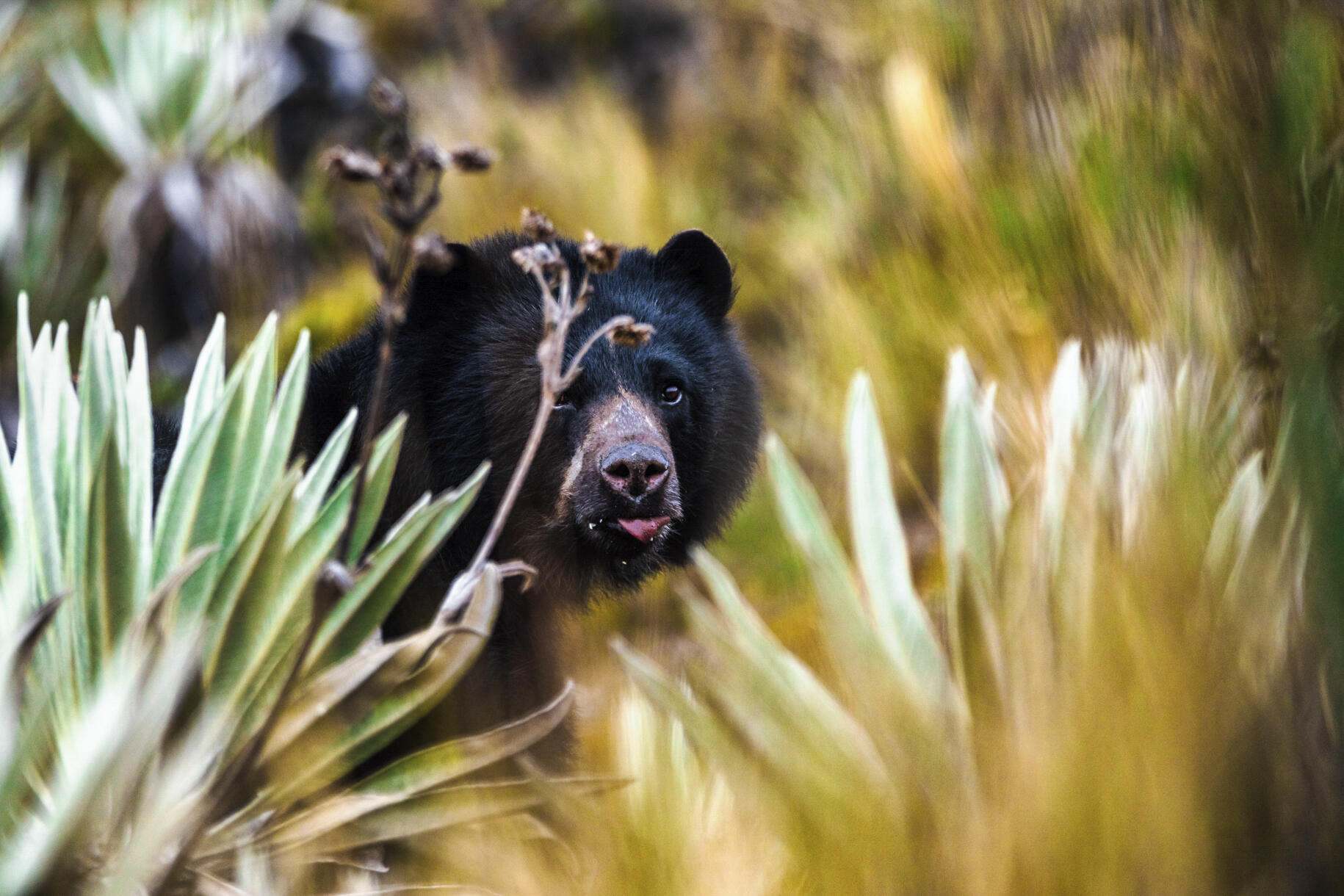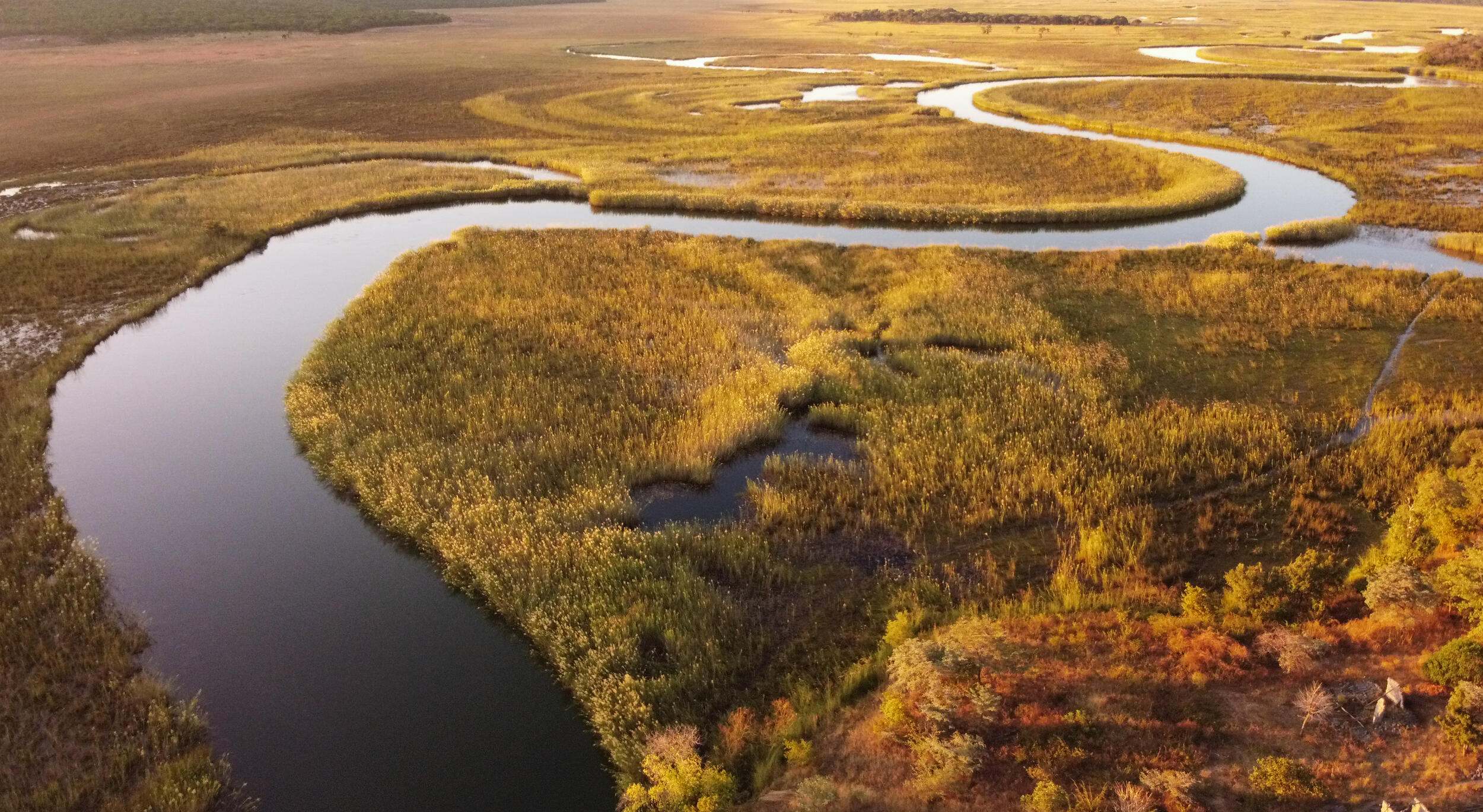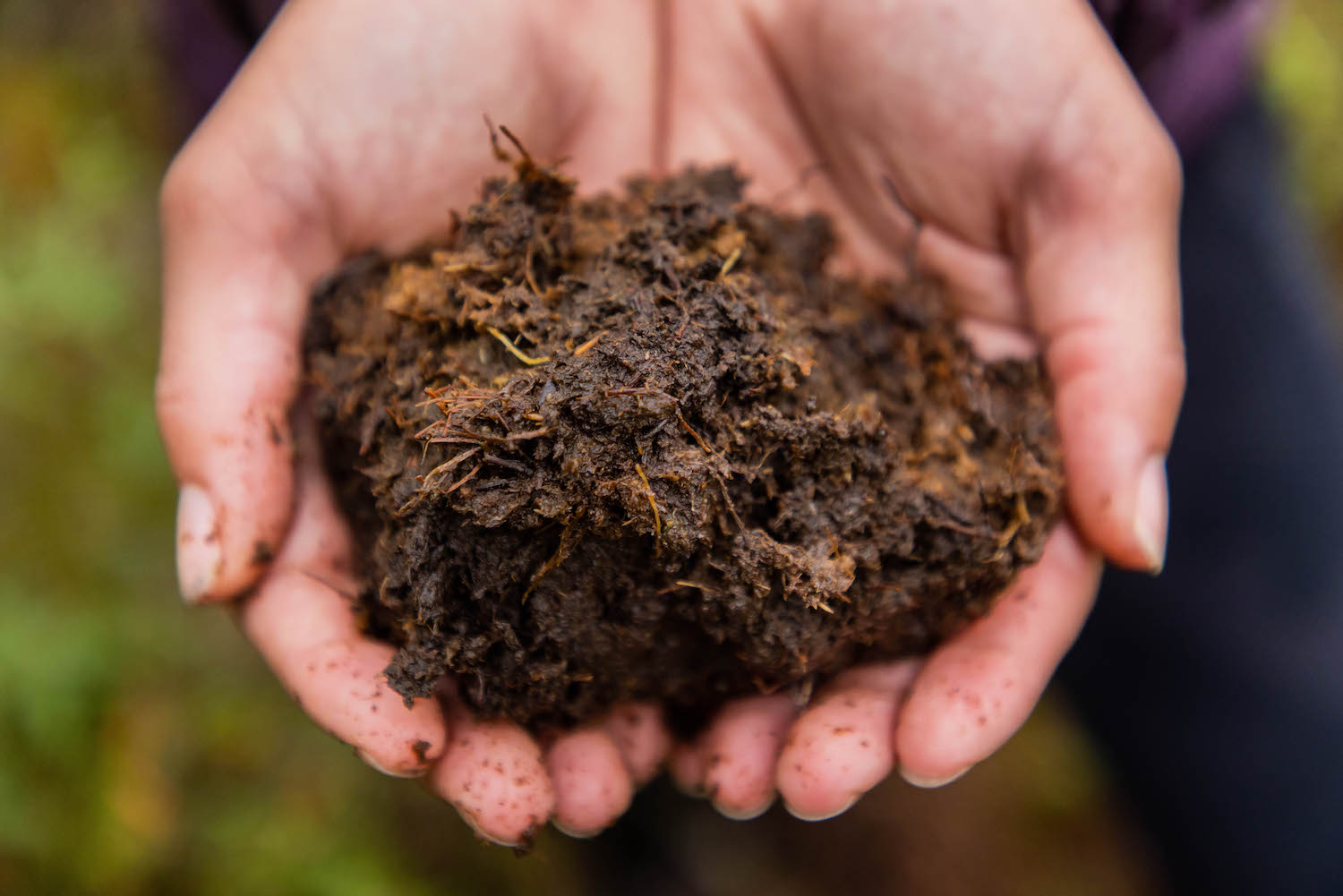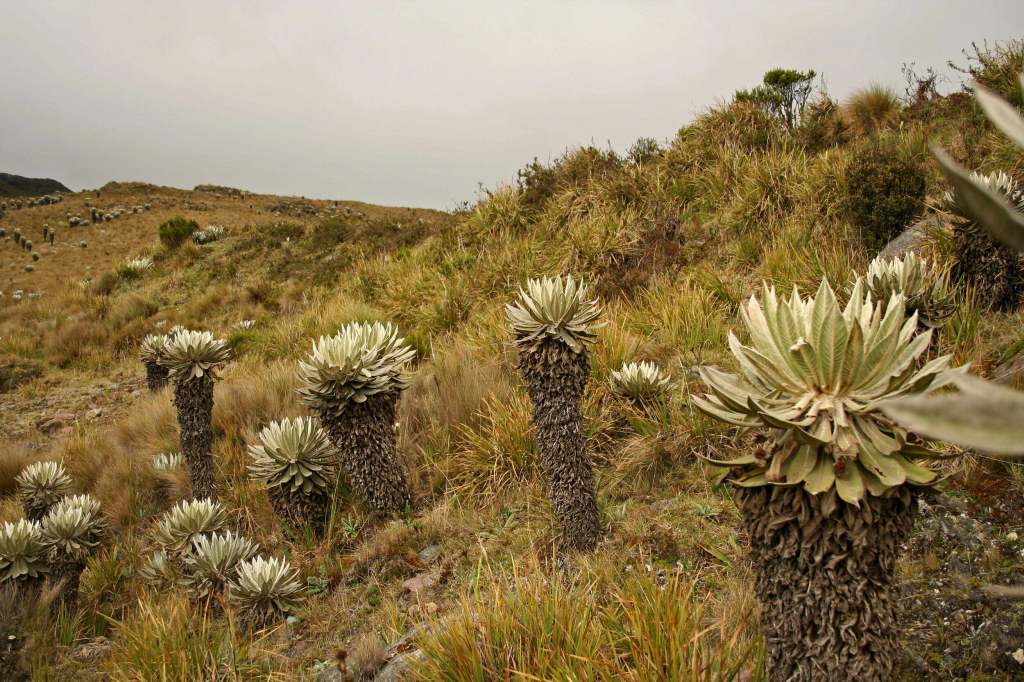A conservation team walks by hummocks of sphagnum moss, mist hanging in the scattered black spruce. They step onto soft, springy ground that squelches under their rubber boots, and a scientist digs up a fistful of dark earth, the smell of wet vegetation rich in the air.
This is a peat bog in Minnesota, near the Sax-Zim Bog conservation area north of Meadowlands. Among the group are Mark Felice, a peatlands scientist for The Nature Conservancy (TNC) in Minnesota, and Deissy Arango, a visiting scientist from TNC Colombia specializing in natural climate solutions (NCS).
Felice is explaining how the team measured the carbon flux data of this peatland ecosystem – information that Arango plans to integrate in an ongoing project back in Colombia.
Peatlands are spongy, waterlogged soils composed in part of decaying plant matter. They’re found all around the world, and despite covering only 3% of Earth’s surface, store around 30% of all the carbon on land.
This makes peatlands, along with forests, incredible allies in the fight against climate change. Beyond their carbon benefits, peatlands support plant biodiversity, provide wildlife habitat, and offer flood protection. They provide important cultural benefits to many communities and ensure millions of people and animals have access to fresh water. Maintained or re-wetted peatlands even have the potential to reduce emissions from wildfires. It’s a wonder we don’t talk about these spongy, carbon-rich wonderlands more often. Here, we highlight five examples of peatlands as natural climate solutions, with work being done to protect, manage, and restore these ecosystems around the world.
Top 10 List
-
Páramos, Colombia

Andean Bear in the Colombian Páramos © Kevin Molano / TNC Photo Contest 2019 Páramos are a type of high-altitude peatland ecosystem found along the Andean Mountain range in Colombia, Venezuela, Ecuador, Peru and in parts of Central America.
These neotropical highlands are home to some extraordinary vegetation including dozens of species of Espeletia sp. Also known locally as frailejón (meaning “big monk”), the plants absorb some of the abundant mist and fog that blankets the páramos, storing water in their peaty soils for slow distribution throughout the entire ecosystem. This process protects downstream communities from floods and ensures a supply of freshwater for millions of people in lower cities like Bogotá and Quito.
The peat-rich soils of páramos also trap and store carbon for millennia. Scientists at TNC Colombia are working with local communities to research the páramos and ensure their climate change mitigation potential can be fully realized.
Did you know? The páramos are also home to the iconic Andean bear. Also known as the spectacled bear for its creamy-colored “spectacles,” it’s the largest land mammal (and only native bear) in South America.
-
Upper Okavango Basin, Angola

The Cuito River in Cuando Cubango province, Angola © Roshni Lodhia The Cubango-Okavango River Basin spans 125,000 square miles in Angola, Namibia, and Botswana. The basin provides water for around one million people and is critical for sustaining local populations in Angola and community livelihoods and biodiversity downstream – it ultimately supplies water to Botswana’s Okavango Delta in the south, one of the world’s largest inland deltas. This delta relies on healthy water flows for its seasonally flooded grasslands that support some 700 species of animals, from fish to wild dogs, hippos and elephants.
The basin includes a diversity of ecosystems, and among them are peatlands that support healthy hydrological flows. In fact, within this region, the upper Cuito sub-basin and Cuando basin are believed to hold one of the largest remaining peat deposits in southeast Angola.
This is a post-conflict area, and to date, there has been limited research about the climate potential of the peatlands in the Upper Okavango. Together with the National Geographic Okavango Wilderness Project, HALO Trust, and many other partners and community groups, TNC’s Angola staff are working to map and measure the extent and volume of the peatlands, estimate their carbon storage capacity, assess the threats to these ecosystems, and build capacity for their long-term protection and restoration.
-
West Kalimantan, Indonesia

Peat swamp in the Kapuas Hulu Regency, West Kalimantan, Indonesia where the team conducted a carbon stock survey © Chandra Indonesia is home to about a third of the world’s tropical peatlands. After catastrophic fires in 2015, the Indonesian government began restoring peatlands extensively, recognizing these ecosystems as its best asset in meeting its greenhouse gas (GHG) emissions targets – avoided peat impacts and peat restoration combined have the potential fulfill 122% of the country’s climate goals by 2030.
Degraded or drained peatlands are restored in a process called rewetting, and in West Kalimantan, one way this is achieved is by canal blocking – building a barrier across canals that were built to drain peat areas for agriculture. This allows natural water flows to be restored to the ecosystem.
TNC Indonesia is supporting these efforts and filling data gaps around the carbon dioxide and methane emissions from restored peatlands in West Kalimantan, as well as impacts to the water tables underground, to better understand the climate impacts and cost-effectiveness of peat restoration.
Did you know? Degraded and drained peatlands emit an estimated 1.9 billion metric tons of carbon dioxide annually, equivalent to 5% of global anthropogenic GHG emissions.
-
Bayanzurkh Soum, Mongolia

Natural climate solutions scientists working in Mongolia © Purevbaatar Ganbold Mongolia’s grasslands span 80% of the country and generate livelihoods for 200,000 families of nomadic herders. These grasslands also provide habitat for rare wildlife including argali sheep, snow leopards, and saiga, a critically endangered antelope.
Within the country’s extensive grasslands is a matrixed system of carbon-rich peatlands, but to date, research on the climate potential of the country’s peatlands has been limited. Most peatlands are seasonally grazed by livestock or managed as source of winter fodder, and the conservation of these ecosystems is not only a promising natural climate solution – it’s critical to supporting the livelihoods and nomadic herding culture of communities across the country.
Along with the Mongolian Academy of Sciences and other partners, TNC Mongolia is working with nomadic herder community groups and supporting peatland conservation activities in the Bayanzurkh soum by providing new information on the extent of peat in the region and its carbon storage potential, while continuing to advocate for herder land management rights and build capacity on sustainable livestock management strategies.
Did you know? Peatlands store twice as much carbon as the world’s forests combined!
-
Minnesota, USA

Peat in Minnesota © Derek Montgomery Back in Minnesota, the peat project team we met earlier is evaluating approaches to restoration of partially drained peatlands, and the resulting climate change mitigation potential, across the state and beyond.
Minnesota has an expanse of nearly 3 million hectares of peatlands, more than any other state in the United States except for Alaska. However, up to one-sixth of Minnesota’s peatlands were ditched for agriculture and forestry starting in the early 20th century. These ditched peatlands are still causing extensive losses of stored carbon today as the drying effect of the ditch system continues to cause peat decomposition and GHG emissions.
Rewetting and restoring the peatlands’ natural hydrology could prevent ongoing emissions and re-establish some of these systems as natural carbon sinks, while providing other benefits for water quality, flood mitigation and habitat.
The project team hopes that understanding the relationship between the plant communities, the hydrology and the carbon dynamics in Minnesota’s peat systems will enable conservation organizations, local communities and governments to better understand how to effectively manage and restore peatlands both here and around the world.
With so much at stake, it’s time we started giving Earth’s peatlands the attention they deserve.
If you’re interested in the scientific work that NCS project teams involved in TNC’s Natural Climate Solutions Prototyping Network are doing around the world to better understand peatlands, you can read more here.




Wonderful article, thank you! I only wish TNC’s Spring Pond Bog Preserve was included in the line-up! It’s the second-largest peatland in New York State, with boardwalk access to promote education and awareness around these incredible ecosystems. I’ve been photographing Spring Pond Bog to promote awareness of this natural ecosystem, with permission from the Adirondack office of TNC. A truly spectacular place that would have been destroyed without TNC’s work to conserve this special place.